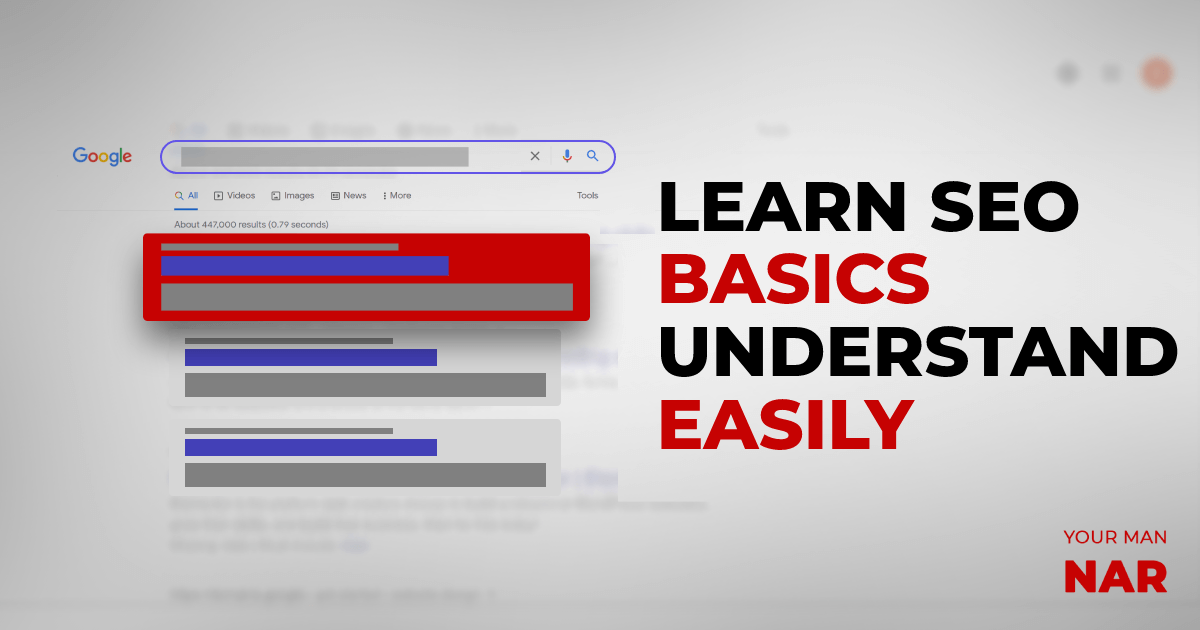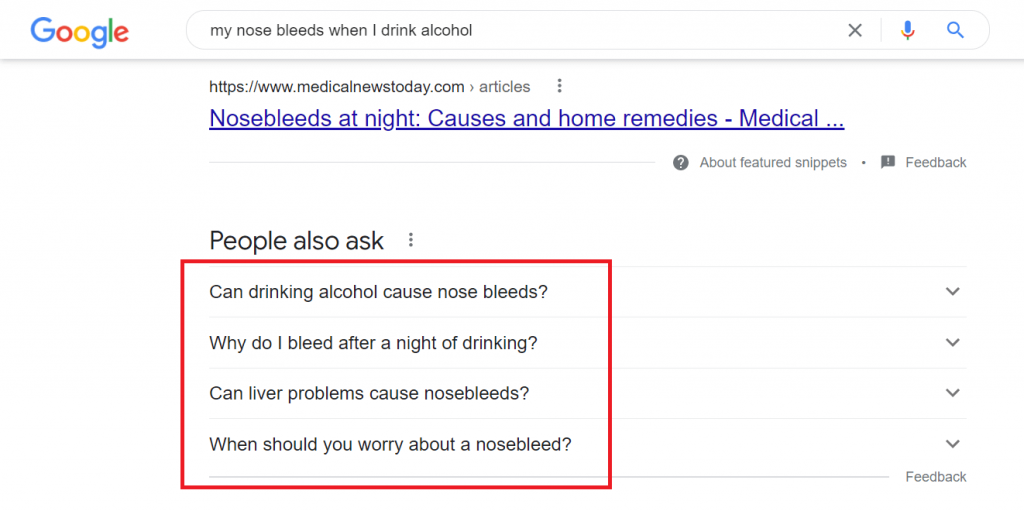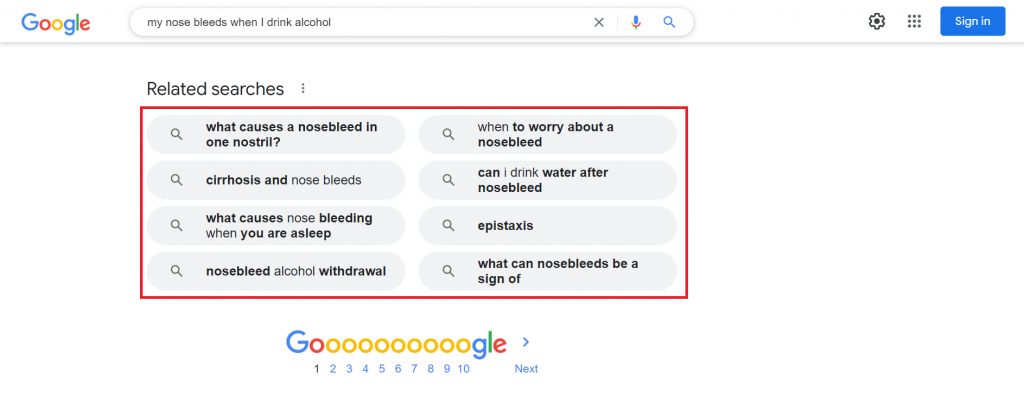为您的网站做 SEO 并在 Google 搜索结果页面上获得高排名并不容易。 你必须知道你在做什么! 这是正确进行SEO的方法。Chinese? Well I was talking about SEO. Here’s a complete guide on website SEO – Increase your organic traffic easily, not in Chinese, but in a language that you can understand.
Content table:
- What is SEO
- SEO channels and usages
- How Google understands content
- The main components that google checks
- On-page & off-page SEO
- How to boost your SEO quickly
- The best tools for measuring and improving SEO
What is SEO:
Search Engine Optimization, is the process, steps and actions you take to improve your website’s and pages’ ranking on Google search results. In other terms, it’s what you do to make Google consider you a good option whenever a relevant search pop ups.
So, if you own a restaurant business in Prague, you want your restaurant’s website to appear on the first page of search results whenever someone searches for “restaurants in Prague”.
SEO channels and usages:
Here are the type of content that gets ranked on Google:
Pages, videos & images.
1. Pages – This includes blogs & articles
This one should be obvious, as the majority of the search results are pages… and the majority of people do look for pages. Information, answers to questions, brands, and everything that comes with it.
All the pages and articles on your website should be keyword optimized, search engine optimized so that they rank higher in search results.
2. Videos – Especially YouTube
Becoming more and more popular, in the recent years, Google includes video results in the search page, there’s also a specific videos section in the SERP. Videos are very relevant and valuable right now. It is crucial to optimize your video titles & descriptions to appear for the targeted keywords.
3. Images
Again, very useful, especially for eCommerce business… Image searches beat all the others when it comes to products. You wouldn’t read about a shoe and buy it, right? You’d like to see it.
How Google understands content
Let’s say someone gifts you a book, how do you figure out what it is about? Definitely the title isn’t going to be COMPLETELY misleading (unless that’s the point of the book)… Surely the book is not going to be named Learn Finances and be about Astronomy, right? Right.
Now imagine trying to figure out what the book is going to be about? What would you do? Definitely you won’t go around and read the entire book. You would go to the back or front of the book and find the table of content, the chapters, read the main chapters, read the headers of each chapter, and that way you would almost entirely understand what the book is about? Right? Right.
Well the same is done by Google. It reads your titles, sub titles, the most repeated keywords, images, videos, links and descriptions.
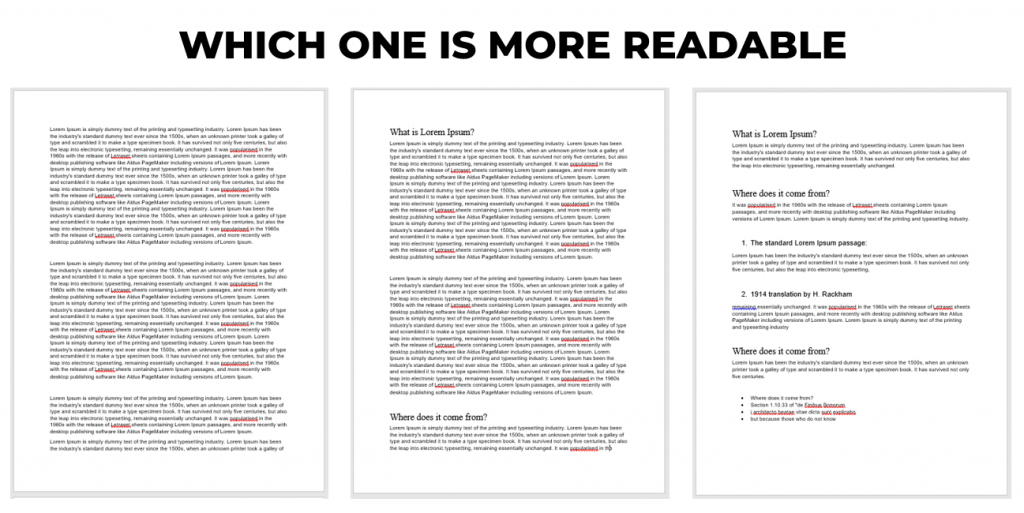
The main components that google checks & how to optimize each one
Here’s what Google looks at in a page. However, please note that Google’s algorithms changes frequently, but the main things remain the same. So make sure you grasp the bigger picture, because otherwise if you follow the tiniest details in the updates you will lose the main goal. Attracting visitors and customers.
The page elements that Google checks:
1. Headings & subheadings
There are 6 types of headings: H1, H2, …, H6.
How to optimize headings & subheadings for SEO:
Think of them this way, the most important title, your page’s/blog’s name, should be H1, the title that come in the page/article should be H2, now any subheading that is included in any given H2 should be H3, and any subheading that is in H3 should be H4, and so on.
Make sure to include your target keyword in the main header (H1), and at least in one H2.
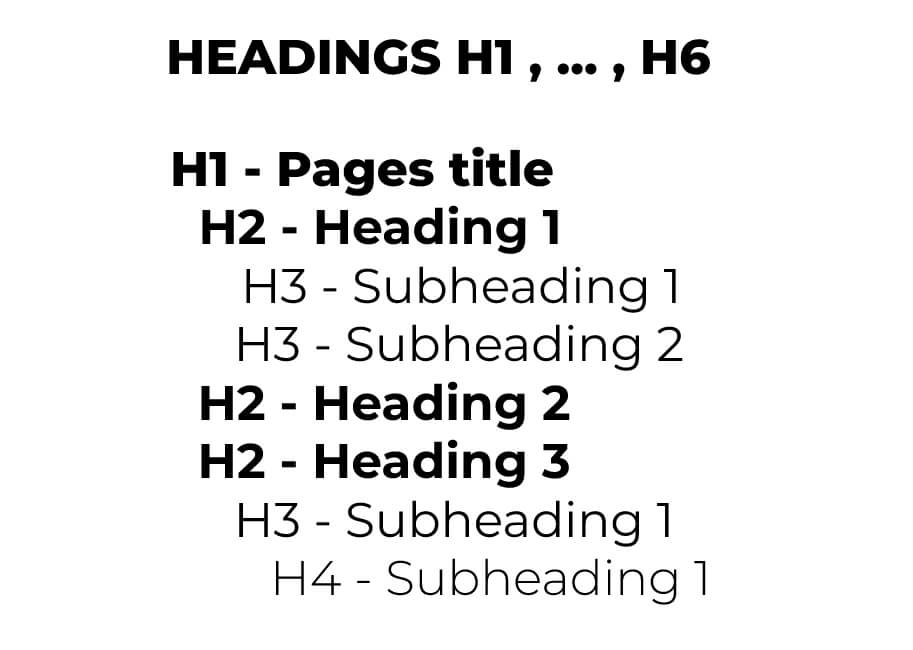
2. Title tag * **
The title that appears in the search results page, the same title that you see when you hover over your page’s tab in the browser.
How to optimize title tags for better SEO:
Make sure it’s not too long, Google displays 50-60 characters in the SERP. Make sure you include your keyword in the title tag, I mean it’s a must.

3. Meta description * **
The description you see under the title and URL in the SERP.
How to optimize meta descriptions for better SEO:
Make sure it’s somewhere between 150-160 characters and includes the target keyword in the beginning of the sentence.
4. URL – Slug **
yourdomain.com/[slug]
How to optimize URLs for better SEO:
Include your keyword in the slug, preferably make it the same as your title. However, avoid having stop words (a, the, etc…) and don’t make it too long.
5. Links (outbound & inbound)
Hyperlinks in the text that either lead to another website (outbound), or to another page on your domain (inbound)
How to optimize outbound links:
Make sure always link out to sources that is not yours. If you take a statistic from somewhere, or an image, or any type of info that’s not yours. Link out to them. If the source is unreliable add a no-follow tag to your link.
Don’t think Google is dumb to believe your content is unique just because you got a 99%+ rate on a plagiarism check. Always link out to the source of your content.
How to optimize inbound links:
Very important, google checks the flow of your website, the more you link to certain pages on your website the more it considers it to be important. Linking to your other articles or other pages on your website is crucial. Make sure the hypertext includes the keyword for which you want the other page (the one you’re linking to) ranks for.
6. Readability
Probably the most important part to which nobody pays attention to. How easy it is to read your article. There are many readability checkers out there, I personally use Yoast.
How to optimize website’s readability for better SEO:
Not so easy, you have to have a checklist, here’s one. (See how I’m linking to a reputable source for you to read it. I could’ve revised the same content and used it in my article, but the source is always better)
[Set up your website’s SEO with Yoast SEO]
7. Images:
No need to explain what images are
How to optimize images for better SEO performance:
Make sure your image sizes are acceptable. Otherwise, compress and resize. Here’s an article on optimum image sizes for best website performance.
Add the alt-tag and include your focus keyword in the alt tag of the featured image. Alt tags help Google understand what the image is about, thus show it in image search results accordingly.
* Note on 2, 3:
Google has updated its algorithms so that it may change the meta description & title depending on the searched keyword.
** Note on 2, 3, 4
Title tags, meta descriptions and URLs are the 3 biggest factors on your CTR from SERP. In other words they are the deciding factor whether the user will click on your page or not. So, it’s always good to have your keywords in there, but also make sure they are clickable and attractive.
On-page & off-page SEO
On-page SEO:
All the actions and improvements you make ON your website.
Off-page SEO:
All the actions and improvements you make OFF your website. In other words, on other webstes.
Imagine you just met someone, would you trust him/her? Would you take his/her word? Most probably no. Now imagine someone you highly trust tells you good stuff about that person you just met, recommends him/her. Now, how much more trustworthy becomes that person you just met?
In the same way, Google considers links to your website from other websites. The more high-quality links you have the better.
The process of getting high-quality links is called link building.
Briefly on the history of link building:
Link building has changed a lot throughout the years, and I mean a lot. There was a point where Google didn’t care where your link was coming from, just as long as you had a link. Then slowly but surely Google improved its algorithms so that it detects and differentiates the bad links from the good ones. Bought links from organic ones. Valuable links from, you got the point. More on link building’s evolution.
Seperate the weak from the ob-solete
The Notorious B.I.G.
How to do link building properly:
Dos:
Build relationship with other webmasters, create a natural link building flow. Reach them out on twitter and email, show them their benefits for linking out to you.
One technique I almost always use, is to write an article about them, and then just Tweet or email them saying something like “hey, I’m bla bla, I really love your website and content and recently wrote an article which mentions you. Can you please check and see if you like what you see? Let me know if you want me to change something.”
In most cases you will either get a link to you, or be mentioned on social media, which is also great.
Don’t reach out to tier 1 websites right away (Frobes, Bussiness Insider, etc…)
Donts
Avoid article directories, submittable websites, domains, websites that sell links (believe me IT IS BAD, NOT WORTH IT).
Avoid getting links from BAD websites, low domain authority. Also, avoid new websites. In short, avoid non-organic links.
How to boost your SEO quickly
The quickest way to boost your SEO quickly is to create a blog:
- Figure out what your audience is really interested in.
- Go to Quora, Reddit and other forums
- Search for topics related to your website.
- Navigate through the questions.
- Find the most asked ones.
- Write an article that sums up all the answers from different sources.
- Share the blog in the forums and social medias.
Example:
I used to run a dropshipping website for bicycle accessories, mainly Bluetooth waterproof speakers. Seeing that competition is fierce, JBL and other brands have conquered the searches for “bluetooth waterproof spakers”. Here’s what I did:
- After research, I found out that my target audience are bicycle enthusiasts. So they search for different models of bicycles, search for upcoming models and stuff.
- I shortlisted top mountain bike brands.
- The year was 2018, but I look at the upcoming releases of each brand’s certain model lines.
- Wrote articles on the list of new upcoming X model of Y brand, colors, prices, releases dates, reviews, etc…
- BOOM, I was ranking, people were searching for it.
- Google being Google, understands that I’m not qualified to speak about bicycles or speakers, so instead I wrote articles that sums up information from multiple different sources.
- In 3-5 months, each article was attracting 200-500 visitors/month.
This way you tell Google that I’m summing up articles from dozens of sources, so what I’m writing is reliable and will save the searcher’s time.
Here’s the general theory of SEO and keyword research:
- Do your keyword research with any of the following tools.
- Manual – Google search results, bottom suggestions, most asked questions & Quora/reddit/forums
- Google Trends
- Google Keyword Planner
- SEM Rush / ahrefs
- Decide what you want to talk about.
- Include the keyword in title, headings, url, meta description, title tag and make sure to use it throughout the content.
- Get organic links from reputable websites.
- Share your article on social medias.
- Stay consistent, the more consistent you are the more Google will consider you reputable.
The best tools for measuring and improving SEO
Google Search Console
Almost all the detailed stats you need. Learn how to create an account, verify your domain.
Google Analytics
Detailed insights on the acquired traffic’s behavior. How does the acquired traffic behave? How do they navigate? Do they convert?
SEM Rush
Analyze your results, website health, detect issues and keep your competitors under your radar.
Ahrefs
Analyze your results, website health, detect issues and keep your competitors under your radar.

